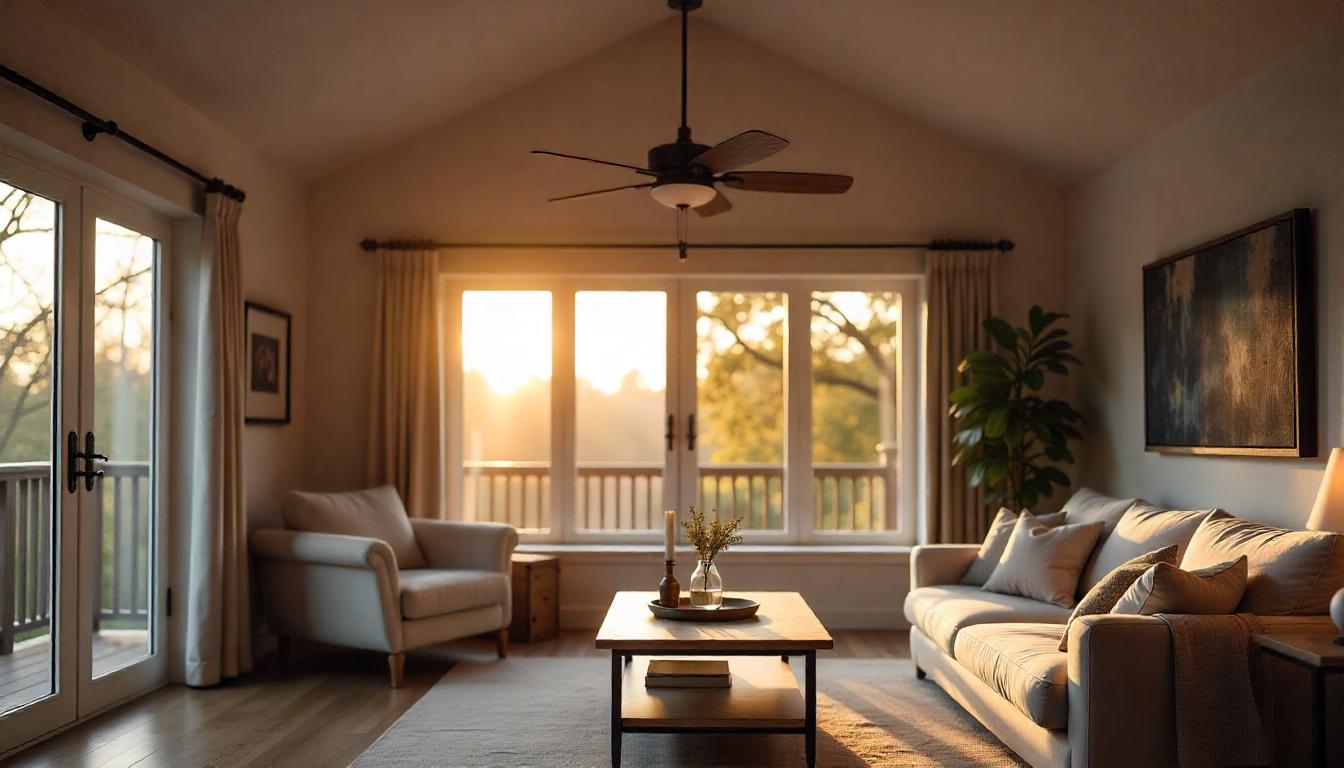When considering energy efficiency for a ceiling fan, several key factors should be taken into account to ensure you select a fan that not only cools effectively but also minimizes energy consumption. Here’s a detailed guide to help you make an informed decision:
1. Motor Type
-
DC Motors: These are significantly more energy-efficient than traditional AC motors, consuming up to 75% less energy while providing similar or better performance. DC motors are quieter and offer more precise speed control.
-
AC Motors: Traditional AC motors are less efficient but can be found in some budget-friendly models.
2. Energy Star Certification
-
Energy Star: Look for fans with the Energy Star certification. These fans are independently tested and certified to meet strict energy efficiency standards set by the U.S. Environmental Protection Agency. Energy Star-rated fans are 40% to 60% more efficient than conventional models.
-
Benefits: Energy Star fans use improved motors and blade designs, providing quality and cutting-edge technology while meeting strict energy efficiency, quality, and performance criteria.
3. Airflow Efficiency (CFM/Watt)
-
CFM (Cubic Feet per Minute): This measures the volume of air the fan can move. A higher CFM rating indicates better airflow.
-
CFM/Watt: This metric combines airflow with energy consumption, providing a measure of efficiency. A good fan should have a CFM/Watt rating of 100 or higher. For example, the Aeratron AE2+ has an impressive efficiency rate of 390 CFM/Watt on high speed and 571 CFM/Watt on low speed.
4. Fan Size and Room Dimensions
-
Room Size: Ensure the fan size is appropriate for the room. A fan that is too small for the room will not provide adequate airflow, while a fan that is too large may be inefficient and visually overwhelming.
-
Blade Size: Larger blades generally provide better airflow but consume more energy. For a 300 sq ft bedroom, a fan with a diameter of 46 to 52 inches is recommended.
5. Lighting Options
-
Integrated LED Lights: Fans with integrated LED lights are more energy-efficient than those with incandescent or fluorescent bulbs. LED lights consume significantly less power and have a longer lifespan.
-
Dimmable Lights: Some fans offer dimmable LED lights, allowing you to adjust the brightness to suit your needs, further optimizing energy usage.
6. Smart Features
-
Voice and App Control: Smart fans can be controlled via voice assistants (like Amazon Alexa, Google Assistant, and Apple Siri) or mobile apps, allowing you to adjust settings remotely and automate operations.
-
Sensors and Automation: Fans with motion sensors and temperature sensors can adjust the fan speed based on room occupancy and temperature, ensuring the fan only runs when needed.
-
Scheduling: Smart fans can be programmed to turn on or off at specific times, optimizing energy usage and reducing costs.
7. Reversible Motors
-
Seasonal Adjustment: Fans with reversible motors allow you to change the direction of the blades, pushing warm air down in winter and cool air down in summer. This feature can help reduce the need for additional heating or cooling, leading to significant energy savings.
8. Installation and Maintenance
-
Proper Installation: Ensure the fan is installed correctly to maximize efficiency. The blades should be at least 18 inches from the walls and 8–9 feet above the floor.
-
Regular Maintenance: Clean the blades regularly to ensure optimal airflow and check for any loose parts that could affect performance.
Example Recommendations
-
Monte Carlo Maverick 60-inch Ceiling Fan: This fan features a 13-degree blade pitch for optimal airflow, delivering 246 CFM/Watt. It is Energy Star certified and costs an average of $6 per year to operate.
-
Aeratron AE2+: This fan has an impressive efficiency rate of 390 CFM/Watt on high speed and 571 CFM/Watt on low speed. It uses only 4 watts per hour at low speed, making it one of the most energy-efficient options available.
-
Big Ass Fans Haiku L Series: This fan features SenseMe environmental sensors and is compatible with Alexa and Google Assistant. It has a 16 brightness settings for the LED light kit and offers multiple speed settings, enhancing energy savings.
Conclusion
Choosing an energy-efficient ceiling fan involves considering factors such as motor type, Energy Star certification, airflow efficiency, fan size, lighting options, smart features, and reversible motors. By selecting a fan with these features, you can enjoy significant energy savings while maintaining optimal comfort in your home.
